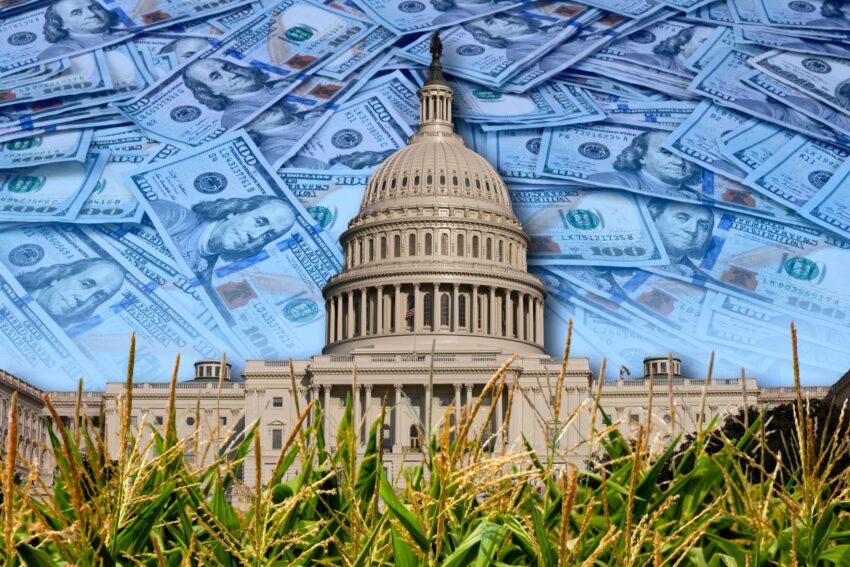In the heart of the 2025 Farm Progress Show, USDA Deputy Secretary Stephen Vaden dropped a bombshell that’s got the ag community buzzing. He revealed that the Trump Administration is eyeing some form of emergency relief for farmers later this year, designed to act as a bridge until commodity program payments kick in for the 2025 crops next fall. It’s a glimmer of hope in what feels like a never-ending storm for American agriculture, but let’s be real, this isn’t just a nice gesture, it’s a necessity. Farmers across the country are hanging on by a thread, and without extra support right now, many could go under for good.
Think about it. The government has stepped in time and again to bail out big banks during financial crises and propped up auto makers when they were on the brink. Those were massive infusions of cash to keep industries afloat, yet when it comes to the folks who literally put food on our tables, the response has been sluggish at best. And we’re not talking about corporate giants here, most farms are family operations, passed down through generations, scraping by on razor-thin margins. These are the backbone of rural America, and they’re facing a perfect storm of challenges that demand immediate action.
One of the biggest culprits is the ripple effect from tariffs and plunging commodity prices. Tariffs imposed by the executive branch have disrupted key export markets, making it harder for U.S. farmers to sell their goods abroad and driving up costs for everything from equipment to inputs. Low commodity prices are compounding the pain, leaving producers with less revenue to cover soaring expenses. Just look at the farm machinery sector; sales have slumped dramatically as farmers hold off on purchases amid the uncertainty. John Deere and other manufacturers are feeling the pinch too, with layoffs and profit drops tied directly to cautious spending by growers facing these headwinds. When you’re already operating on a shoestring, there’s no room to invest in upgrades, even if your old tractor is on its last legs.
The numbers paint a grim picture. This year, the median farm in the U.S. is projected to operate at a loss, with forecasts showing a negative income of around $328 for many operations. That’s not a typo, it’s a reality where off-farm jobs are often the only thing keeping the lights on. And it’s not like this came out of nowhere. Congress has dragged its feet on the Farm Bill for far too long, punting extensions instead of delivering a comprehensive update that could provide stability. The current bill has been extended yet again, but that doesn’t fix the underlying issues, and experts are betting we might not see a new one until 2026 at the earliest.
Adding insult to injury, overly optimistic yield forecasts from the USDA and firms like StoneX have flooded the market with expectations of record-breaking harvests, tanking grain prices even further. Corn yields pegged at 188 bushels per acre or higher sound great on paper, but in practice, they’ve crushed futures markets and left farmers with even less bargaining power. It’s a vicious cycle, tariffs disrupt trade, prices drop, yields are hyped, and suddenly you’re selling below cost just to move product.
At this point, opposing help for farmers seems downright insane, especially when you consider where else our tax dollars are going. Billions continue to flow overseas to places like Israel and Ukraine, funding conflicts and aid packages that rack up eye-watering totals. We’re talking over $130 billion to Ukraine since the war started, and annual commitments to Israel in the billions for military support. Don’t get me wrong, foreign policy has its place, but how can we justify pouring money into bombing abroad while skimping on the people growing crops right here at home? It’s a stark contrast that highlights misplaced priorities; farmers feed the nation, yet they’re treated like an afterthought.
The truth is, emergency assistance isn’t optional, it’s urgent. Vaden’s comments signal that the administration gets it, at least on some level, but words need to turn into action fast. Family farms are closing, rural communities are suffering, and the entire food supply chain could feel the fallout if we don’t step up. We’ve bailed out Wall Street and Detroit before, now it’s time to throw a lifeline to Main Street’s hardest workers. Farmers need help, and they need it now, before it’s too late.


